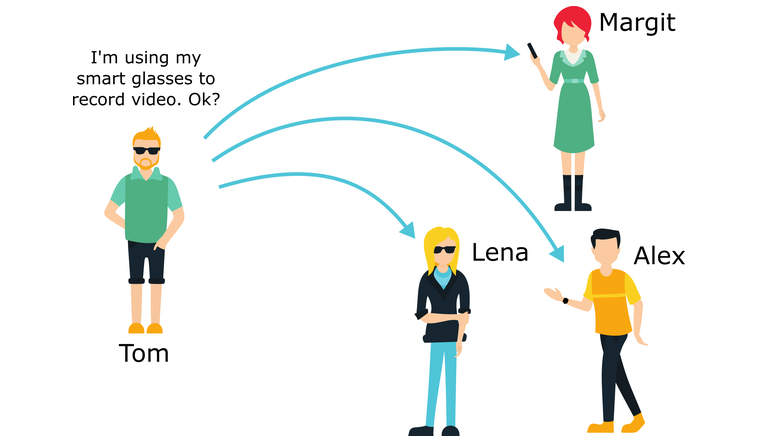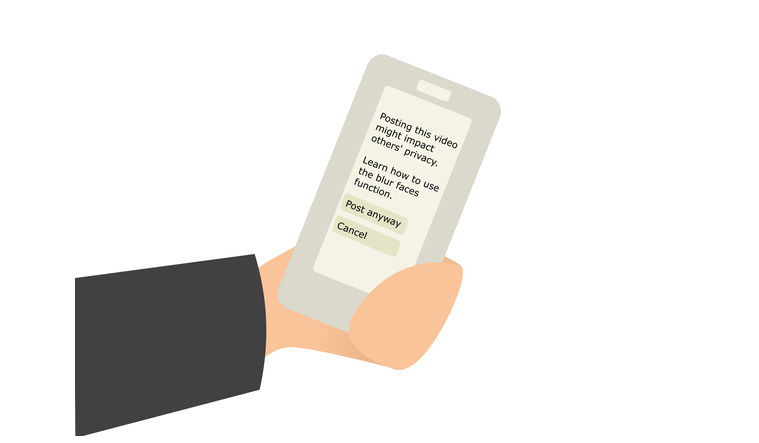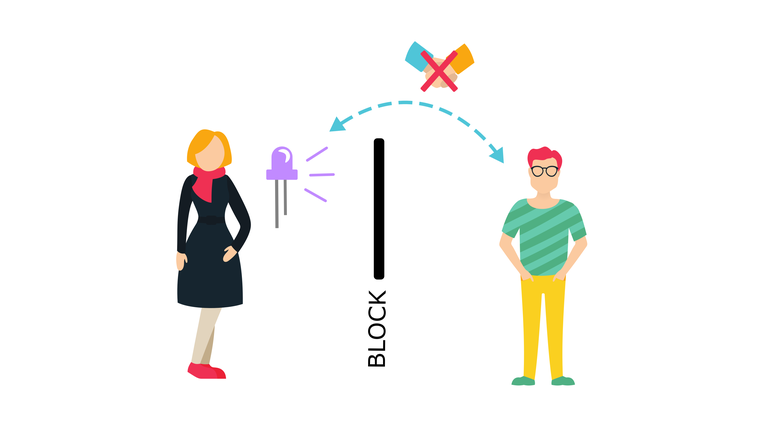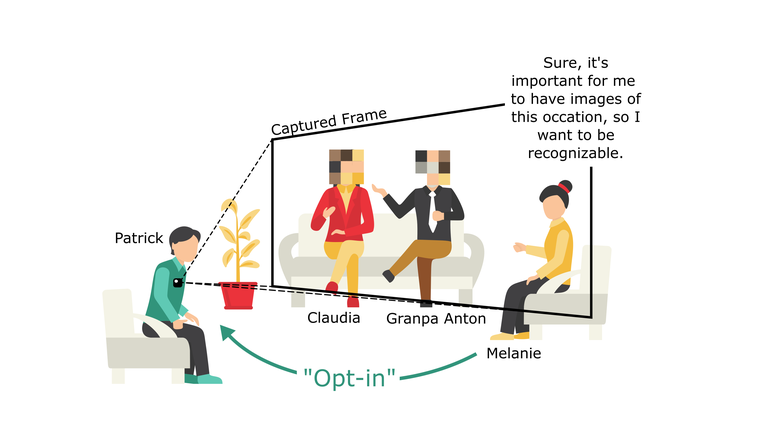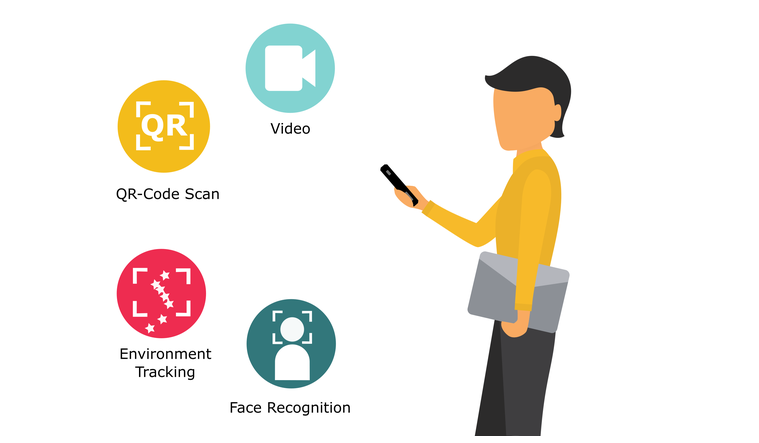Privacy Mediation Cards
Browse Cards
Here are some sample cards displayed.
Communication
Initiative
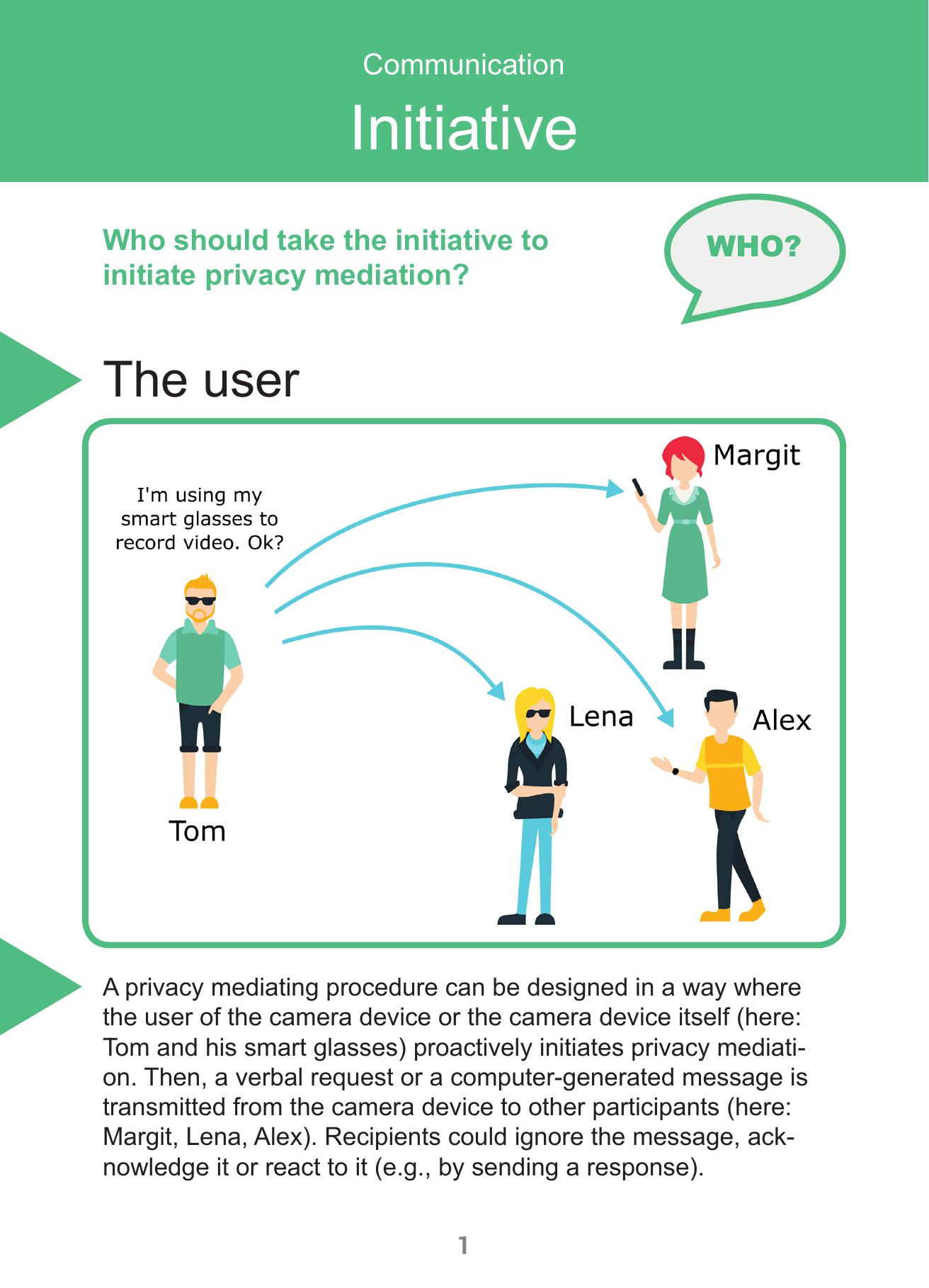
Click image to flip card
Who should take the initiative to initiate privacy mediation?
The User
Enforcement
Obligations

Click image to flip card
In what way are measures for privacy protection brought to the user?
Suggested
Implementation
Compliance
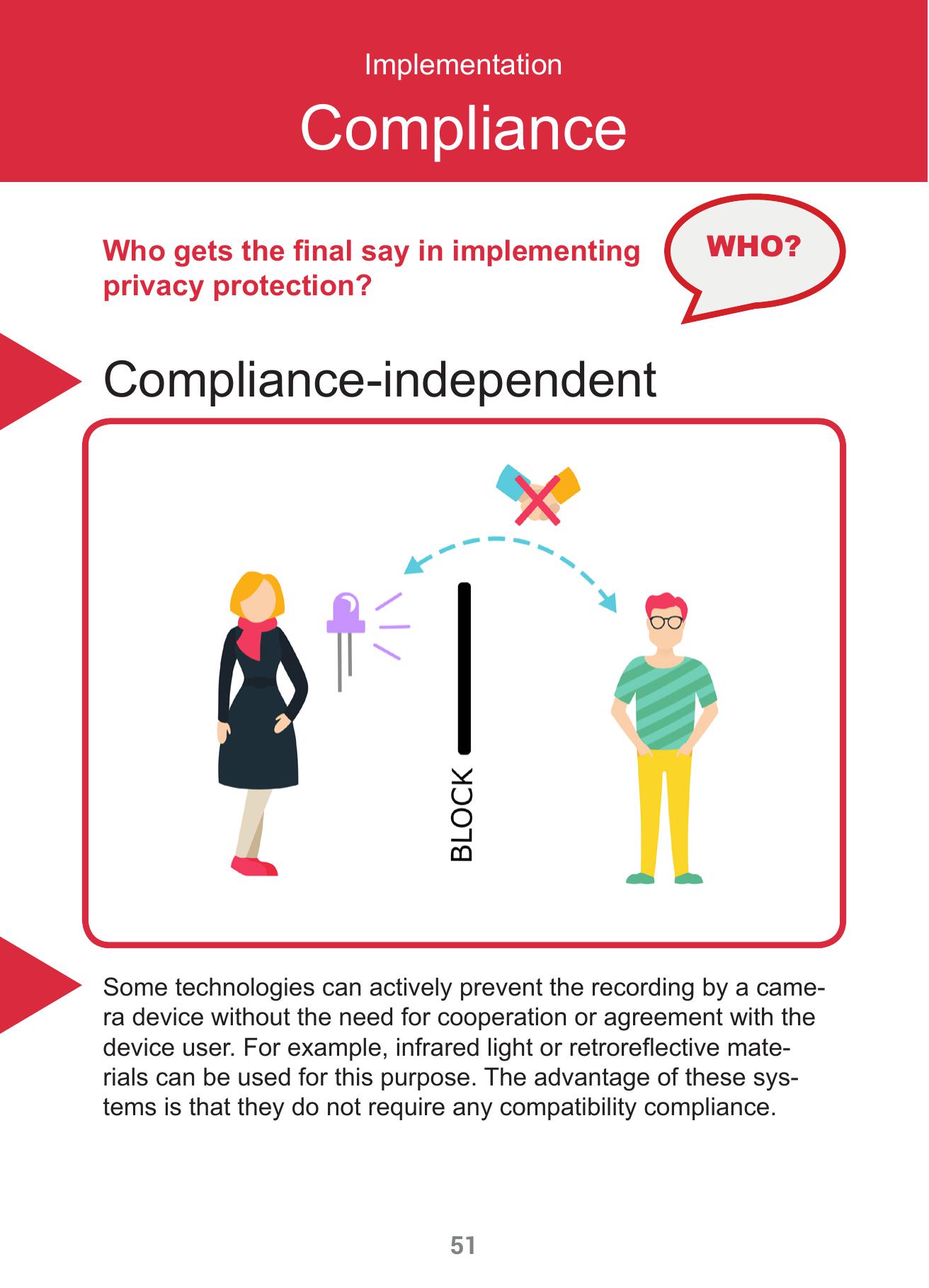
Click image to flip card
Who gets the final say in implementing privacy protection?
Compliance-independent
Participation
Default Behavior
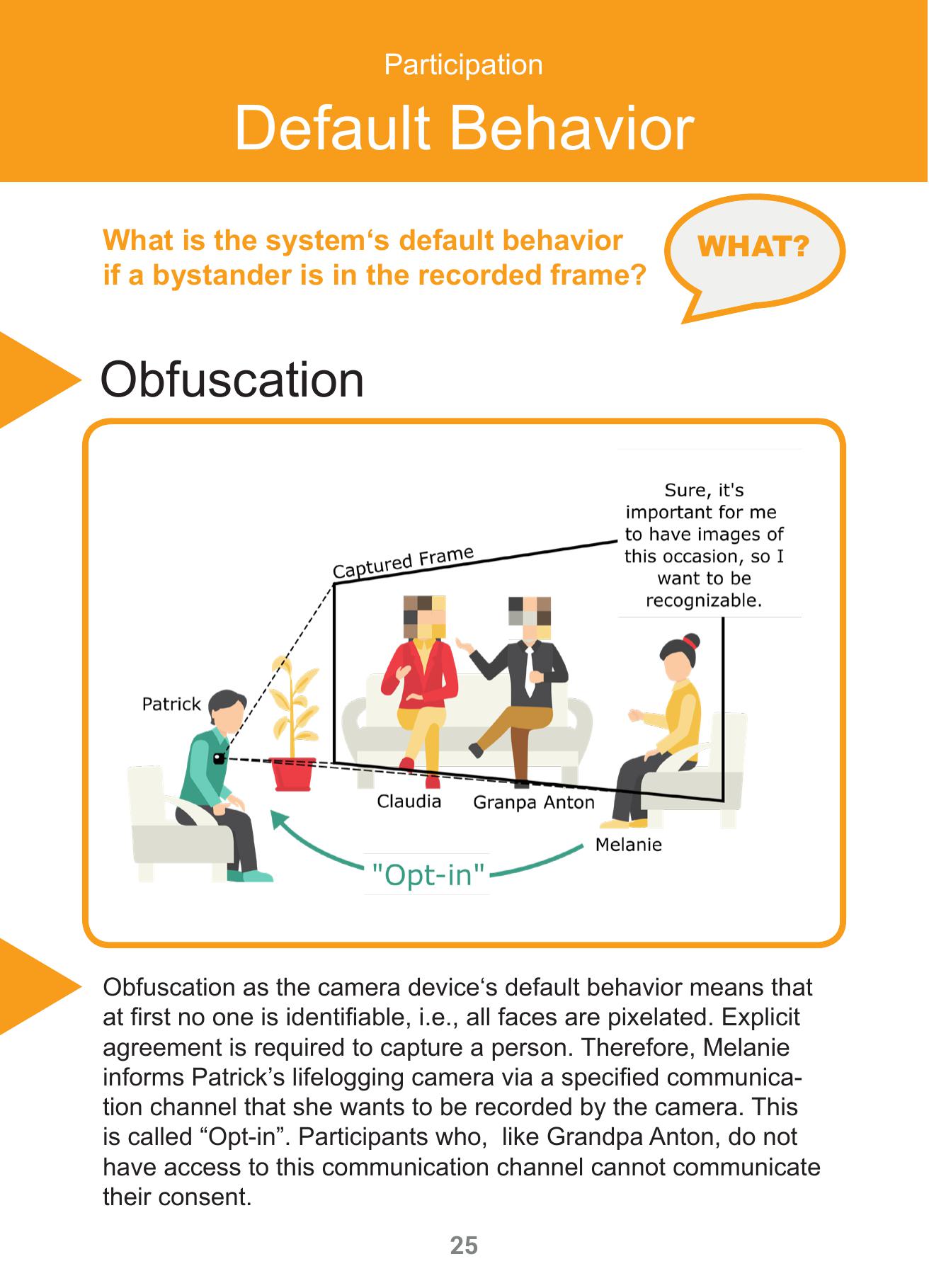
Click image to flip card
What is the system‘s default behavior if a bystander is in the recorded frame?
Obfuscation
Responsibility
Responsible Party
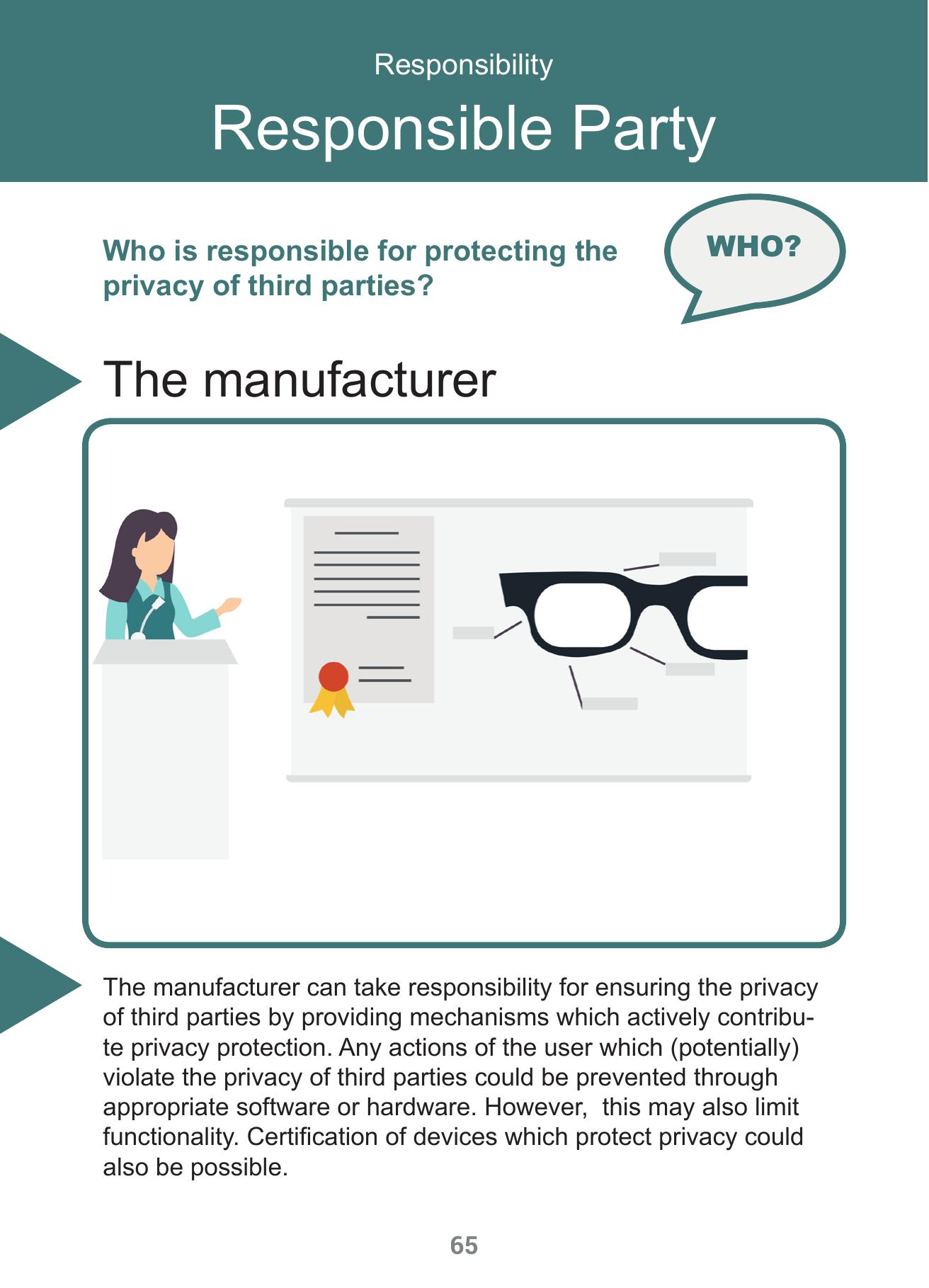
Click image to flip card
Who is responsible for protecting the privacy of third parties?
The manufacturer
Visibility
Information Content

Click image to flip card
What kind(s) of information does the camera‘s status display show?
Intention-based
